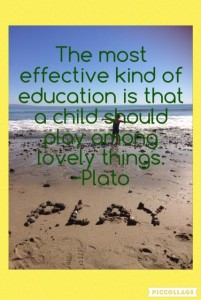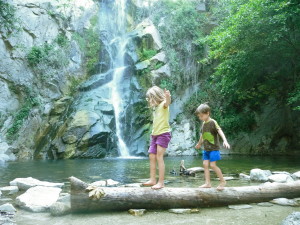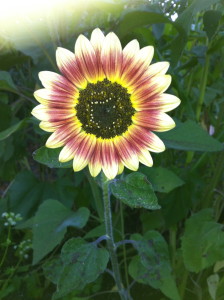
To plant a garden is to believe in tomorrow.”
~Audrey Hepburn
It is time to finally get the school garden of your dreams going. We assembled 5 great ideas you can get started today. Some of the benefits of school gardens are listed here:
- Improves test scores
- Promotes health
- Encourages environmental thinking
- Improves school climate
- Increases consumption of fruits and vegetables
- Promotes playing with nature
For a list of scholarly articles you can visit Life Lab. They have done an incredible job supporting garden classrooms.
Now, let’s consider what you want to achieve with your garden. How do you want your school community to interact with it? Often when you see a school garden you find a sad little planter box behind a chain link fence. This scenario is fine, if all you are interested in is planting some peas and then harvesting them. If you want to be able to take your whole class to your garden, the most important consideration is space. You want to have enough room for an open area and seating, be as far away from anybody minding noise as possible, and have a readily available water supply.
1. Awesome Outdoor Classroom
Get about twenty hay bales and arrange them in a circle. If there is a tree even better. Tree stumps will also work well. This beautiful classroom is under a shady tree at the Los Angeles County Arboretum. Can’t you just see the beautiful lessons under this sheltering oak tree?
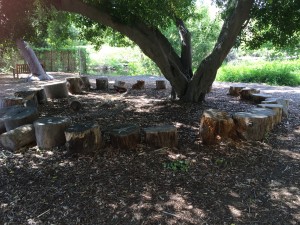
Outdoor teaching is a whole new animal that comes with its own sets of benefits and challenges. When we first started the wind kept blowing away our worksheets and artwork. Now we use clipboards to keep everything in place. Just be aware that there will be a learning curve to teaching outdoors.
2. Butterfly Tunnel
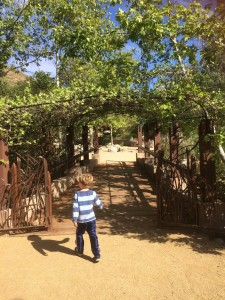
What could be better than a little hiding spot? Better yet a hiding spot that attracts butterflies. Simply plant your favorite butterfly host plants around a tunnel trellis and soon you will be able to observe the life cycle of a butterfly right in you school garden.
3. Sensory Garden
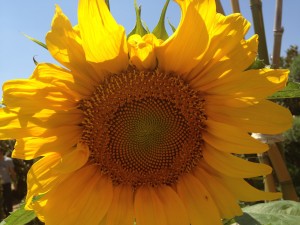
Let’s face it. Kids like to touch stuff. Why not make it possible for them to have a garden where you get to touch and smell the plants around you. It is very important to use hardy, non-toxic plants. Sage, lavender, thyme, and rosemary are some excellent choices.
3. Raised Beds
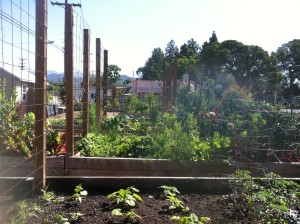
Raised beds really look good and are easy to maintain. It really helps to leave space between the beds. Ideally a whole class should fit around a garden bed. This way a teacher can take the whole class to the garden. It also really helps to place a few benches or picnic tables. This way some students can do some seat work while others garden. We often bring a bucket with books and a group of students simply reads.
4. Water Pump
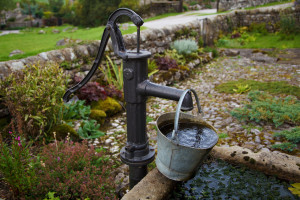
In Europe almost every playground seems to have an old-fashioned water pump. Kids love to water and they are willing to work for the privilege. A pump and some watering cans can keep a class busy for an entire day.
5. Small Pond

A small pond is not only a beautiful addition to a school garden but also a great opportunity to observe ecosystems right on your school campus.
Some of these ideas might take some time to develop. Just take the first steps today. Even if you have only a small dirt patch and some seeds, your students will benefit in so many ways. We started our school garden with some tomato plants and a few watering cans. We probably harvested 2 tomatoes. They tasted disgusting and we had to cut them into 24 pieces. We still learned so much from the experience. Like so much in learning, it is the process, not the product that matters. By planting two tomato plants we learned about pillbugs, soil consistency, and the effects of a prolonged drought. Don’t hesitate, just go for it. Happy gardening!

